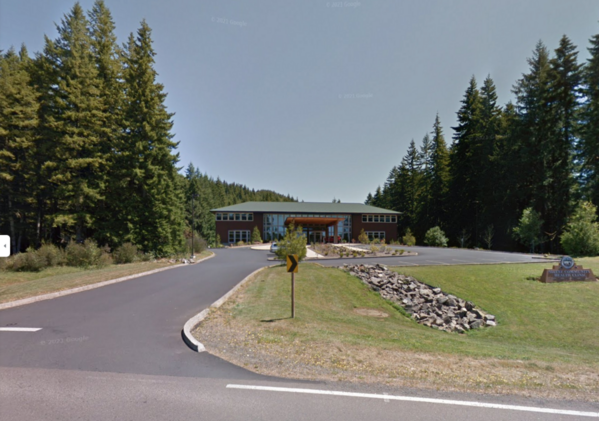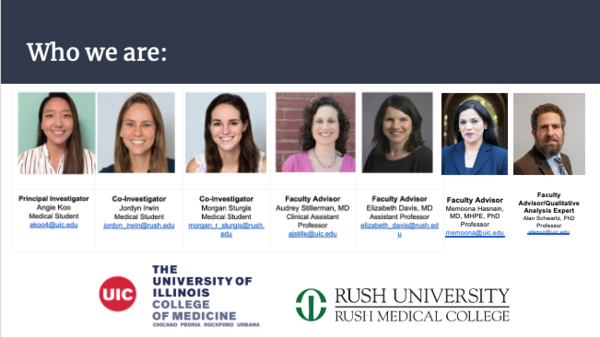Three relatively recent studies from different parts of the U.S. show that only a tiny percentage of physicians, medical school faculty and other healthcare providers are integrating practices and policies based on the science of positive and adverse childhood experiences (PACEs).
Why it matters: For people in the PACEs community, the following is news that’s 20 years old: Adverse childhood experiences are common, preventable and linked to six out of the top ten leading causes of death in the United States.
As one of the studies noted: "Positive and negative experiences in childhood shape our trajectory of health or illness for our entire lives, and this impact can be attributed to the brain-body physiology that results from our experiences during childhood."
The science is well established. Thousands of research papers have been published about the long- and short-term health effects. Every U.S. state has done an ACE survey, many more than one. Legislation addressing childhood trauma and PACEs science has been passed in 39 states. Dozens of books have been written about the topic, including two bestsellers; one of those—Bessel van der Kolk’s The Body Keeps the Score—has been on the New York Times paperback bestseller list for 178 weeks. Physicians who have been early adopters for more than a decade say they would never go back to not integrating it into their practices.
In 2016, only eight out of 192 medical schools included content about childhood trauma, and that could be just a single lecture. Early adopters in the medical community know that if PACEs science isn’t integrated into medical schools, benefits of its knowledge will never get to patients. And people WANT their doctors to know about this. Donna Jackson Nakazawa, author of Childhood Disrupted: How Your Biography Becomes Your Biology and How You Can Heal, posted this article on ACEsTooHigh.com: Childhood trauma leads to lifelong chronic illness—so why isn’t the medical community helping patients? It’s had more than two million page views and hundreds of comments.
Who did the studies and why? In Muskegon County, MI, Resilience Muskegon, a community organization created by mental health agency HealthWest, did a survey of county residents that showed a huge disconnect between the healthcare system, which is highly rated, and the health of people in the county. A local ACE survey showed that 31.4 percent of adults have experienced 4 or more ACEs, nearly three times the number in the original CDC-Kaiser Permanente Adverse Childhood Experiences Study, which showed 12.5 percent had an ACE score of 4 or higher. This prompted researchers to recruit 226 physicians from Mercy Health, a hospital and healthcare system that serves 85% of the county, to participate. They asked if they knew about ACEs science, if they used it in their practice, and if they had a personal history of ACEs.
In Texas, researchers from the University of Texas and the University at Albany, NY, recruited 85 healthcare providers from Central Texas that included physicians, nurses, social workers and other staff who were at least 18 years old and providing care in a medical setting to women or children in Central Texas. Going into the study they thought that most healthcare workers would know about ACEs. They thought that most screened for traditional ACEs such as substance use or mental health issues, more often than ACEs such as bullying or community violence, and they thought that most patients would self-disclose common ACEs. They also thought that healthcare providers familiar with ACEs would implement ACE-informed strategies for patients, such as providing resources for patients or creating an ACE-informed culture in their practice. They were remarkably off target.
In Illinois, a team comprising three medical students and four medical school faculty noticed that “very, very few of our colleagues knew anything about childhood trauma,” says Dr. Audrey Stillerman, one of the authors who is clinical assistant professor in the Department of Family and Community Medicine at the University of Illinois at Chicago. They were also interested in why this science that has existed for decades hasn’t been integrated into medical education so that it could become a part of clinical practice. What's the rub? they wondered. Why isn't medical education just different now? The team developed a survey to explore these questions; 81 faculty members from the University of Illinois College of Medicine and Rush Medical College in Illinois responded.
Deep dive: What the researchers found: In the Muskegon County study, most physicians—81 percent—had never heard of the ACE Study. Only 3 percent used it in their practice. Half of the physicians reported no personal history of ACEs. Those who did report having ACEs had a wide range of scores, from 1-9.
In the Central Texas study, despite the CDC and the American Academy of Pediatrics providing a plethora of information about PACEs science over the last several years, the research showed that most healthcare providers didn’t know about the science or the impact of ACEs. Because there were more participants that received training in childhood trauma or toxic stress than ACEs science and impact, it seems as if the training isn’t addressing ACEs science. Most healthcare providers aren’t conducting ACEs screenings, but one in five providers said that their patients volunteered information about a family history of mental illness, experiencing their parents divorcing or substance abuse. Of the 10 response strategies that the participants were asked about, only four were being used: referring patients to other services or clinicians in their practice, providing information to read, and identifying family strengths. Fewer than 10 percent indicated they were creating an ACE-informed culture in their practice, linking patients with community resources or collecting data.
Most participants in the Illinois study were familiar with PACEs science, and almost all said that the science is relevant to their work, but only 22.2 percent had fully incorporated the science. And most acquired their information outside medical school or courses for physicians. Most knew about aspects of PACEs science, but 20 percent or less knew that “childhood adversity is preventable”, and “patients who present with unexplained symptoms, severe or rare presentation, and/or multiple chronic health problems have a history of childhood adversity”. They didn’t believe they had access to resources that could help their patients, and they said they didn’t have time to ask patients about their childhoods. Pediatricians had more knowledge and understanding about PACEs and how to help patients with childhood adversity than physicians in other specialties. Although participants understood that childhood experiences affect the brain, that childhood experiences at all levels—individual, family, community, structural and historical—are powerful influences across the lifespan, and that human brains are malleable, under 14 percent didn’t know that healthcare professionals are more likely to experience childhood adversity.
Why is this important, or relevant? “If we're trying to move the needle, and if we believe that medical education is a very important influence on how doctors practice,” says Stillerman, “then we need to figure out how to get this information, not by one lecture during medical education, but really woven throughout the undergraduate and graduate medical education.”
She thinks it’s possible to teach physicians to integrate ACEs into their work. “I mean, do you get everything you need in the 15-minute visits?” she asks. “No. But you don't anyway, so you can reorient yourself a little bit in 15 minutes. But if you give somebody an invitation to tell you about their life, and they tell you ‘I don't have enough to eat or I'm unhoused or my partner's beating me,’ you understand that these and earlier experiences impair development and brain-body physiology across the lifespan and are at the root of their physical or mental health problems, you need a way to either do something for them yourself or connect them to help rather than simply writing a prescription or ordering a test. Connecting the dots for ourselves, our trainees and our patients, in the context of a caring partnership, while we focus on the root paves the way for prevention and healing."
The larger issue is that every time there’s a study about this topic, researchers say that PACEs science is about so much more than changing what medical schools teach. “In addition to preparing faculty and integrating the science into medical education, we need to also change societal structures and what happens in healthcare environments,” says Stillerman. She points out that many types of social factors affects whether people are healthy or not—structural racism, lack of housing, toxic workplaces, inadequate education, inadequate income— and the healthcare community must figure out how to integrate what it does in that larger context.
What’s the future? Although these research studies gathered their data four to six years ago (it takes years to move from proposal to gathering data to publication), things haven’t changed much. Dr. Andrew Factor, a internal medicine practice physician, learned about PACEs science about four years ago and began integrating it into his practice. He tried, unsuccessfully, to interest physicians in other specialties in his large healthcare organization. Not only did get the cold shoulder, the healthcare organizations’ administrators were dismissive. He works in a federally qualified health center now, but it’s still an uphill battle.
The reason for more physicians not integrating PACEs science is that they are stuck, he says. The disincentives to change abound. Clinics are under-resourced and don’t have time or funding to incorporate new training. “When people are introduced to PACEs science, they don’t see the benefits. They say, ‘I’m not a pediatrician. This is out of my scope of practice. I don’t have time to do anything else’,” he says. “There’s also some amount of hubris, some amount of being set in their ways.”
Although he continues to integrate it into his practice as he can, real change won’t occur until his clinic and the medical community in general begins a concentrated effort to integrate practices and policies based PACEs science. Despite his frustration, the knowledge of PACEs science helped him. “It reduced my burnout,” he says. He was ready to quit, but it re-energized him about the practice of medicine.

But there's real hope. Dr. Michael Flaningam recently left a large healthcare system where he had also tried to convince his colleagues to integrate PACEs science, to no avail. About eight months ago, he joined the Siletz Community Health Clinic, funded by the Confederated Tribes of Siletz Indians in Siletz, Oregon. Last week, he talked with the clinic’s new medical resident, who came from Samaritan Family Medicine Residency in Corvalis, Oregon.
He asked her the same question he always asks physicians he meets: “Have you heard of ACEs?”
Instead of the blank stare he usually gets, she said, “Well, yes. We’ve had lectures on it, and it’s incorporated into almost all parts of our training.”
“I had to get up and walk around for a few seconds, because I got the chills,” says Flaningam. She told him that she felt comfortable bringing up PACEs with patients, and mentioned that they all had been very relieved and inspired. “I just I was really, really pleased,” he says.
It was clear that in the program this resident came from, “the doctors, the attendings, the instructors, they have normalized ACEs,” he says. “They have said, ‘Okay, this is part of medicine.’ There are no AHA moments as there are for physicians who are 20 years out of medical school. They just practice medicine with a PACEs lens.”
For the last 30 years, he says, “us older docs were infused with the idea that medication or surgery were the main interventions. Unfortunately, it’s going to take a new generation of doctors that come out of training programs where PACEs science is normalized, and they’ll eventually outnumber us older ones and help make the changes we need to see.”




Comments (0)